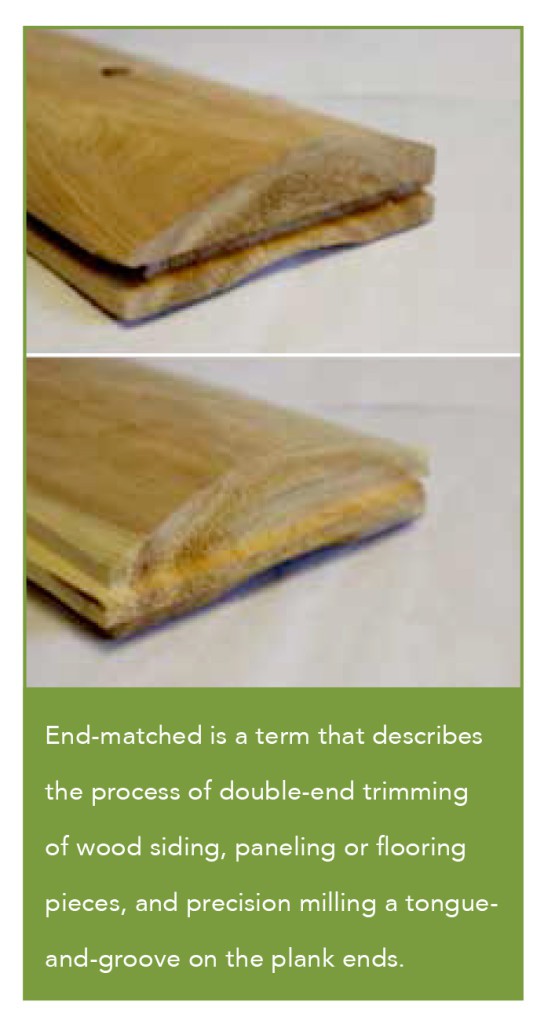 End-matching has been around for well over two decades in the manufacturing of wood siding, paneling and flooring. This process has been shown to significantly decrease waste and labor, which make installation simpler and more efficient. However, builders are not easily convinced to move away from their tried and tested ways.
End-matching has been around for well over two decades in the manufacturing of wood siding, paneling and flooring. This process has been shown to significantly decrease waste and labor, which make installation simpler and more efficient. However, builders are not easily convinced to move away from their tried and tested ways.
This article seeks to first outline and respond to the main concerns from builders who have traditionally used non-end-matched products, secondly to outline the key benefits of end-matched products, and thirdly to provide testimonials from builders who have taken the leap.
What are builders concerned about when they see, for example, 3”x8” Hand Hewn end-matched siding — random lengths 2’ to 8’?
The first concern is often directed to the 2 to 8 foot tally. This can be mind boggling when you are used to 12 to 16 foot lengths. How do I cover the long sections? Where do I use all the small pieces? Will there be numerous visible seams? What will that look like? Does it create any problems? Will I still need to make cuts? How much waste factor do we need to account for? Will it end up as being more work?
Builders’ main concerns can be boiled down to the following points:
- Tally and use of different lengths
- Appearance
- Waste
- Workload
These concerns can all be easily addressed — and will be as you read on!
How does end-matching change the build process?
The most significant change for a builder is that end-matched paneling or siding no longer needs to butt on a stud. This means that builders no longer have to wrestle with 12’ and 16’ lengths warping, then cutting each end to square it off to fall on a stud. We defect for you!
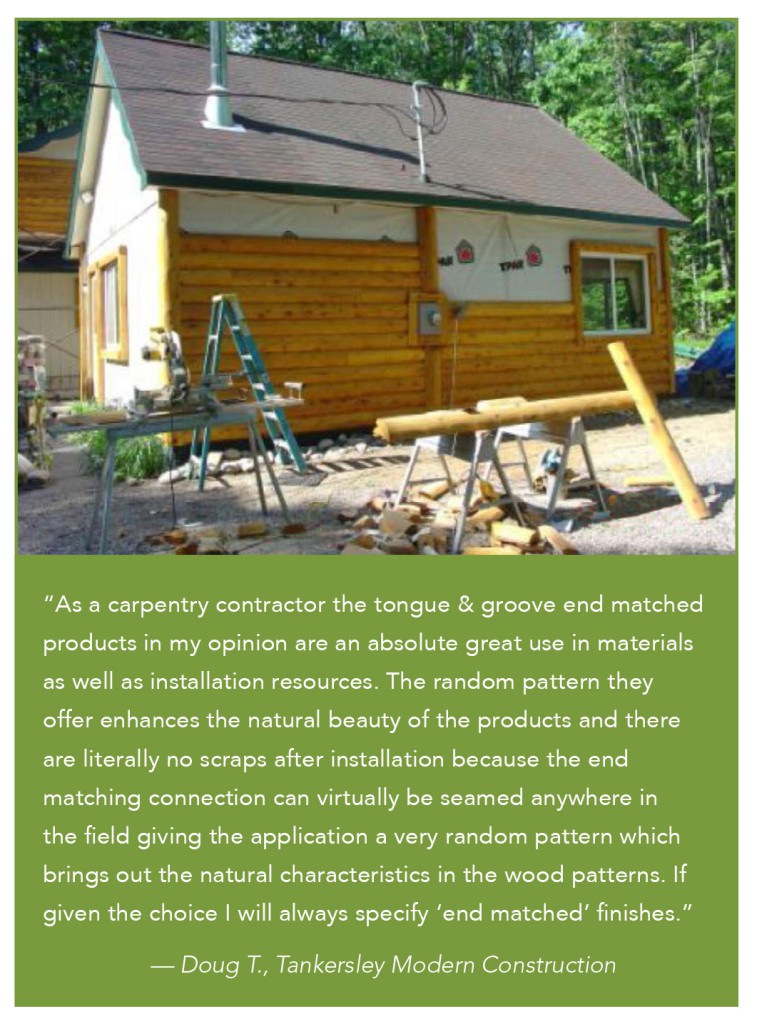 Defecting cracks and loose knots has already been taken care of at the mill. Using end-matched products, therefore, significantly reduces the amount of measuring and cutting on each job. It eliminates the need to cut each plank end during installation. Instead, the plank ends fit together nicely in their pre-cut tongue-and-grooves, sealing out weather and saving a lot of time on the installation process.
Defecting cracks and loose knots has already been taken care of at the mill. Using end-matched products, therefore, significantly reduces the amount of measuring and cutting on each job. It eliminates the need to cut each plank end during installation. Instead, the plank ends fit together nicely in their pre-cut tongue-and-grooves, sealing out weather and saving a lot of time on the installation process.
With the decrease of on-site cutting, end-matched manufacturers recommend that builders only need to account for a 5% material waste margin, due to a reduction of material cut waste by up to 20%. This has been corroborated by most builders who made the change using our products. In addition, they have confirmed up to 15-20% on-site labor savings.
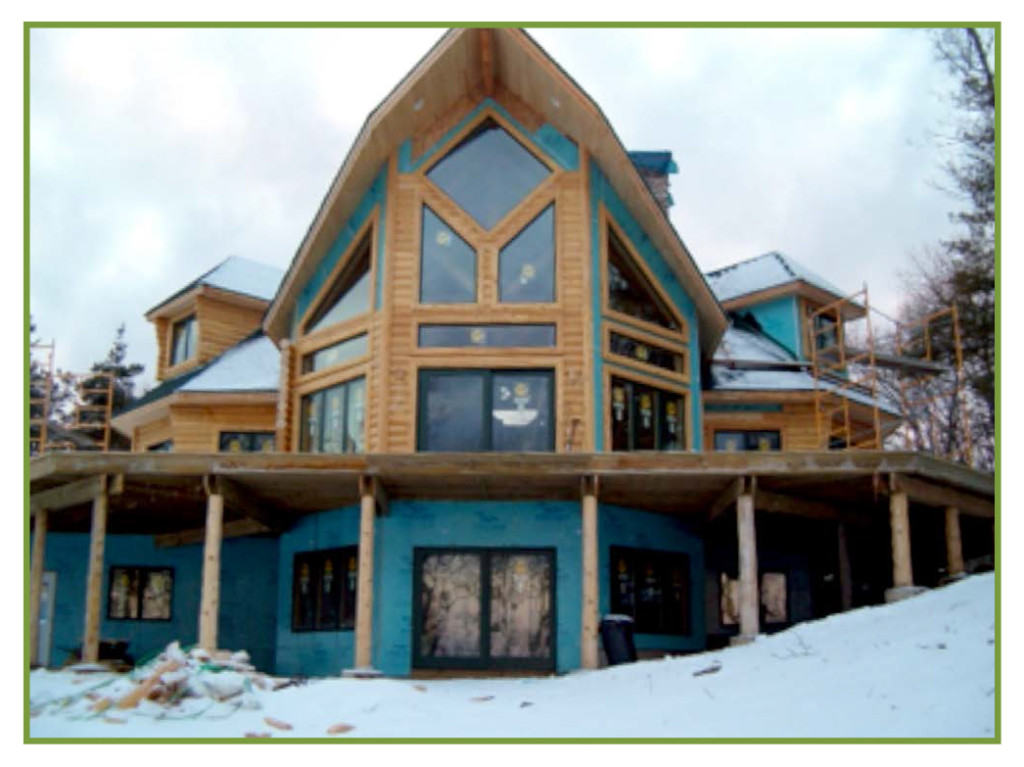 But where do I use all those small pieces?
But where do I use all those small pieces?
Between close windows, around doors in porch sections, up by the eaves and so on. That is where you traditionally need to use smaller pieces, and that remains the case. However, with end-matched products you can use them anywhere necessary as the seams are made to blend in, adding to the rustic feel. See for yourself!
Our bunks are composed of a variety of 2’ to 5’ lengths and 6’, 7’ and 8’ lengths. This will allow you to minimize cutting and material waste.
Small pieces used on a wall facade
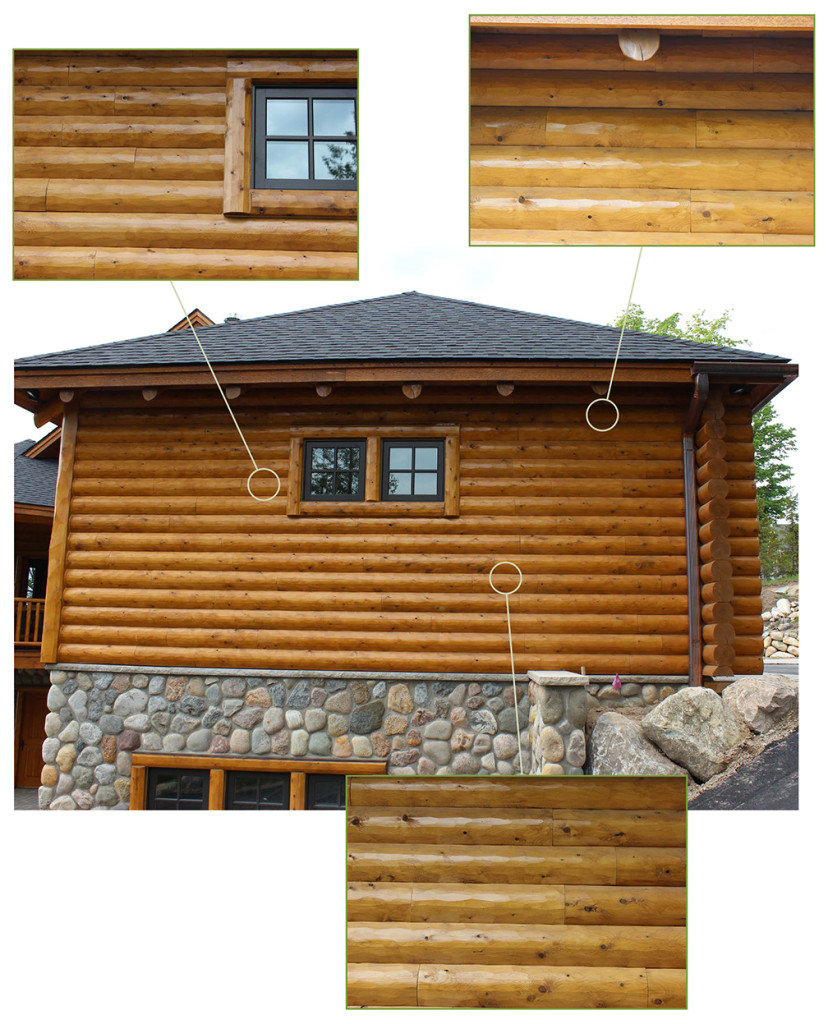
What about the appearance?
Can you see many seams? The exterior and interior applications shown here display the use of different length pieces on significant wall sections. Though they may be visible at times, the seams do not detract from the soundness of the wall and add to its character.
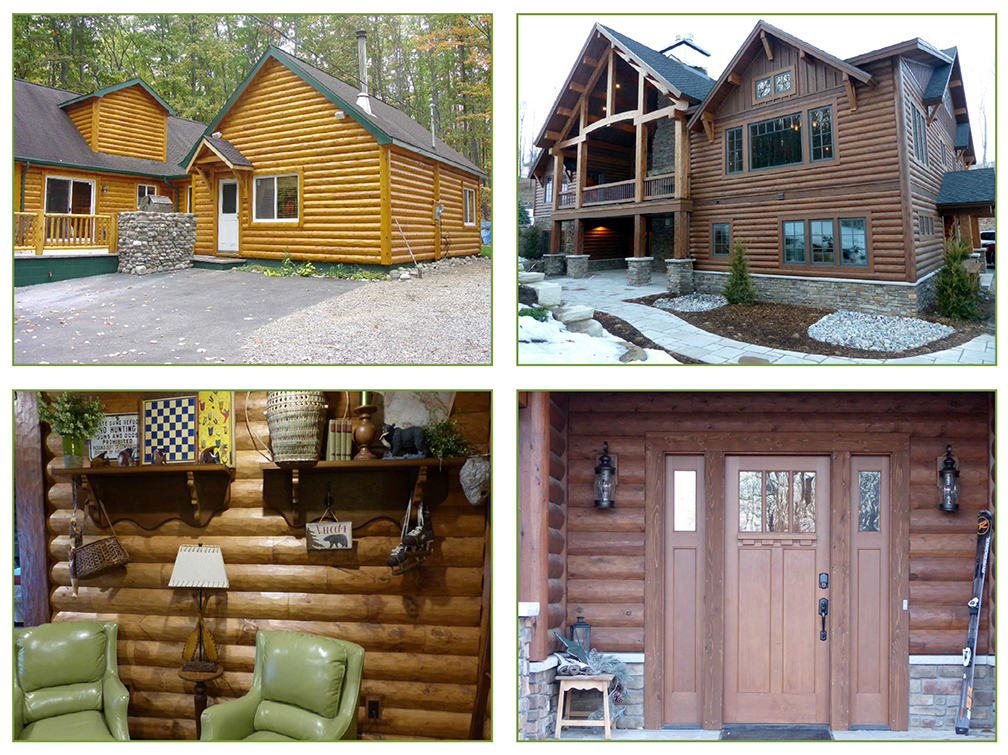
In applications such as hardwood flooring, end-matching allows for a more consistent color and grain appearance. The industry is changing. Tongue and groove and end matching is becoming an industry standard in hardwood flooring. For example, “All NOFMA-certified flooring is required to have an endmatch” says Glen Miller, manufacturer division manager at the National Wood Flooring Association.
Log seams on hand-hewn White Cedar siding
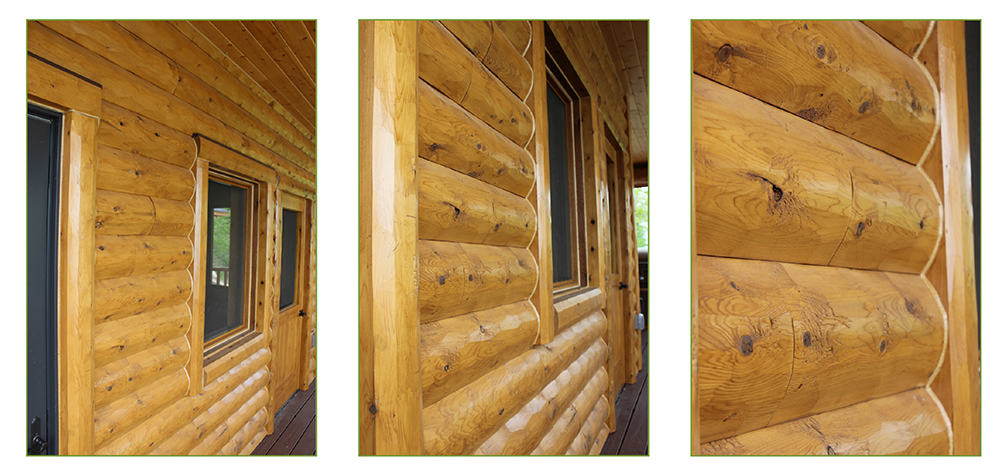
No more face nailing!
In addition, you no longer need to face nail! Our end-matched tongue and groove siding and paneling do not require face nailing across the board but “blind nailing” through the tongue of the log directly through the OSB sheathing and into the stud beneath.
This keeps the integrity of the weather proofing and the look. And you no longer get the calls one or two years later asking why the nails are bleeding through the face of the siding.
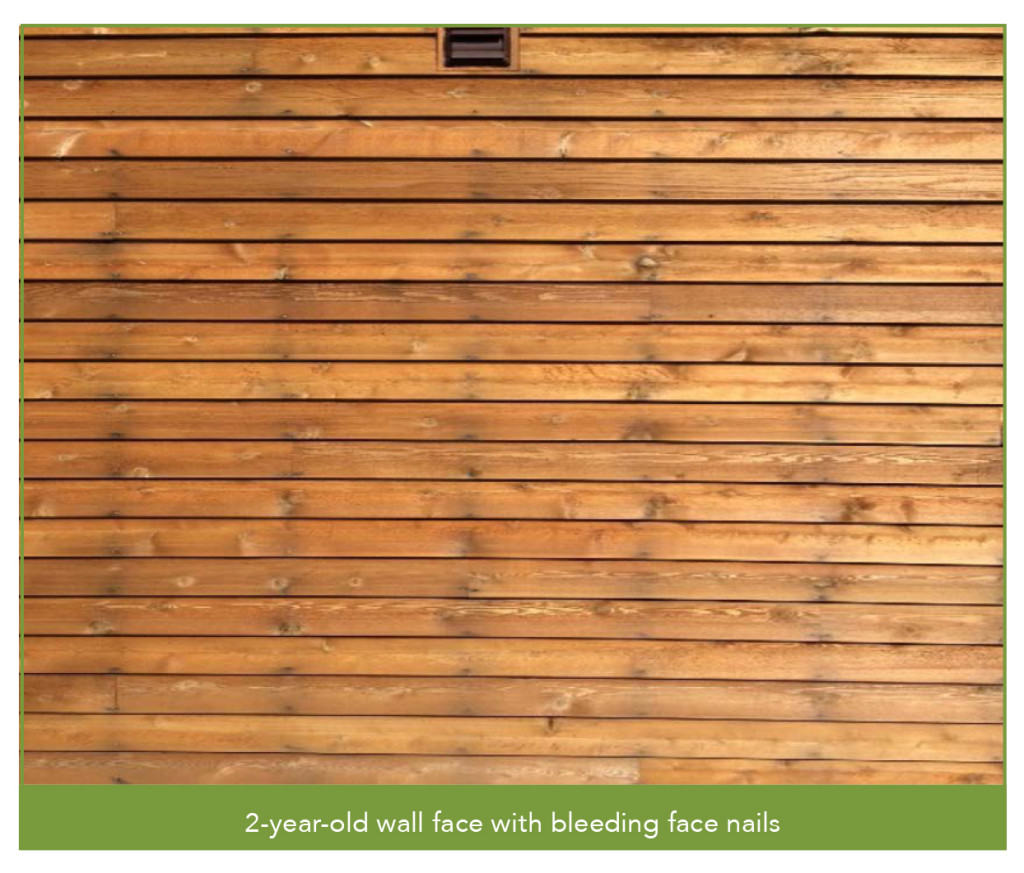
Benefits of end-matched products
- Reduced material waste up to 20% less on material waste as defecting has already taken place at the mill.
- On-site labor savings of up to 20% as testified by builders by significantly reducing the amount of measuring and cutting on each job.
- Easier to install as end-matched paneling or siding no longer needs to butt on a stud. You simply continue from where you left off!
- A better weather barrier — No face nailing across the board but “blind nailing” through the tongue of the log.
- Happy customers!
